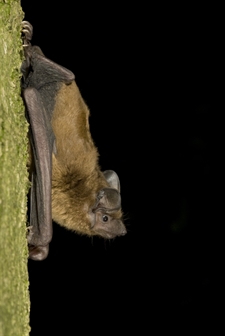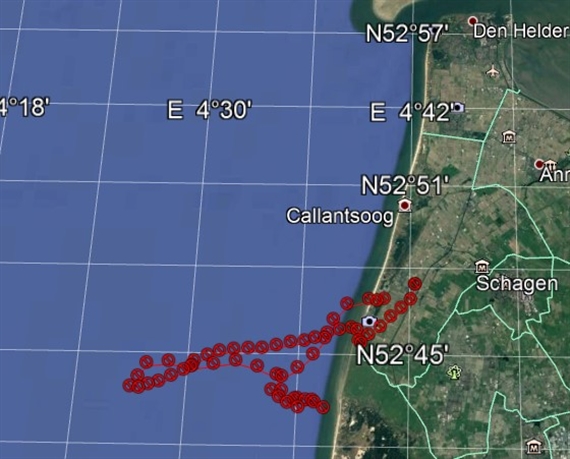Non-migratory bats and offshore wind farms
A new study
Wozep has been investigating the individual migration patterns of the Nathusius’ pipistrelle, a small migratory bat that regularly crosses the North Sea, with lightweight radio transmitters. In order to validate the 2D accuracy of the location estimates, a small number of Common noctules, a larger species of bat that can carry larger weights, were tagged with both radio transmitters and lightweight GPS loggers.
The collected data produced an interesting secondary observation about where these bats feed at night. It turns out that they fly over coastal waters, with one individual actually travelling twelve kilometres offshore, and possibly even further.
 This was the first hard evidence demonstrating that some local, non-migratory bats may venture far offshore for nightly foraging trips. The data raised the possibility of these animals being at risk of collisions in offshore wind farms situated outside territorial waters. Indeed, these species could be more at risk than others because they tend to fly at heights of 50-100 m above sea level, which is well within the range of the rotor-swept area.
This was the first hard evidence demonstrating that some local, non-migratory bats may venture far offshore for nightly foraging trips. The data raised the possibility of these animals being at risk of collisions in offshore wind farms situated outside territorial waters. Indeed, these species could be more at risk than others because they tend to fly at heights of 50-100 m above sea level, which is well within the range of the rotor-swept area.
Photo 1: Common noctule (source: René Janssen).

Image 1: Feeding trip of a GPS-tagged Common noctule, September 2019 (source: Wageningen Marine Research).
It was therefore decided to launch a pilot study to establish a more detailed picture of the home range of Common noctules from coastal colonies. Do they forage in marine habitats, to what distances and in which circumstances? The answers to these questions can help us to decide whether planned offshore wind farms may represent a hazard for coastal Common noctules, to what extent and in which circumstances.
The pilot study will include two campaigns to capture twenty Common noctules, preferably ten males and ten females, in late June/early July and mid-August respectively. GPS loggers and beeper tags (which are needed to relocate the animals) will be attached to the bats. The colony selected for the pilot study is located in the small forest of Wildrijk, near the village of Sint Maartensvlotbrug in the province of North Holland, which is home to a well-studied population of Common noctules.
We will follow the bats for four to five nights during two periods in the season. The aim is to produce statistically reliable maps showing nocturnal feeding trips. In this way, we can learn more about the home ranges of the bats and link this information to weather conditions and, of course, the role of the marine environment.